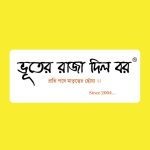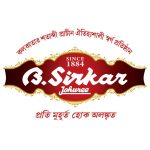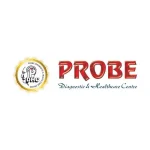Understanding DLT & SMS Sender IDs
DLT (Distributed Ledger Technology) Registration
DLT (Distributed Ledger Technology) registration refers to a regulatory framework implemented in India to streamline and regulate the commercial messaging ecosystem, primarily to prevent spam and ensure the legitimacy of messages being sent to consumers. The framework is enforced by the Telecom Regulatory Authority of India (TRAI).
Purpose of DLT Registration
- Spam Prevention: To minimize spam and fraudulent messages, ensuring that only registered and verified entities can send commercial messages.
- Transparency and Traceability: To create a transparent system where every commercial message can be traced back to its origin, helping in tracking and preventing misuse.
- Consumer Protection: To protect consumers from unwanted and potentially harmful messages, ensuring they receive communications from legitimate sources.
Key Components of DLT Registration
- Entity Registration: Businesses and organizations that intend to send commercial messages need to register themselves on a DLT platform.
- Header Registration: Also known as Sender ID, this is the alphanumeric identifier that appears as the sender of the message. Businesses must register their headers on the DLT platform.
- Template Registration: Each type of message template that a business plans to send needs to be pre-approved and registered on the DLT platform. This includes promotional, transactional, and service messages.
- Consent Registration: Businesses must obtain and register the consent of consumers to receive messages, ensuring compliance with consent-based communication practices.
Steps for DLT Registration
- Choose a DLT Operator: There are multiple DLT operators authorized by TRAI. Businesses need to select one to register with.
- Register as an Entity: Provide required details such as business name, type, and other relevant information to register as an entity.
- Register Headers: Submit and get approval for the headers that will be used in your messages.
- Register Message Templates: Create and submit message templates for approval. Each template should comply with TRAI guidelines.
- Obtain Consumer Consent: Collect and register consumer consents if required for your messaging needs.
Benefits of DLT Registration
- Enhanced Trust: Consumers are more likely to trust and engage with messages from verified senders.
- Regulatory Compliance: Ensures that businesses comply with TRAI regulations, avoiding penalties and legal issues.
- Improved Delivery: Reduces the chances of messages being marked as spam, improving delivery rates and engagement.
Challenges
- Initial Setup: The registration process can be time-consuming and require detailed documentation.
- Ongoing Management: Businesses need to continuously manage and update their templates, headers, and consents to stay compliant.
DLT registration is crucial for businesses in India that rely on SMS and other forms of commercial messaging to ensure they operate within the legal framework and maintain consumer trust.
A-Using SMS for your tour and travel company can be a highly effective way to engage with customers, provide timely information, and boost your business. Here’s how you can utilize SMS for various purposes:
1. Promotional Messages
Send promotional offers, discounts, and deals to attract new customers and retain existing ones.
Example:
Hi [Customer Name]! Book your next holiday with us and get 20% off. Use code TRAVEL20. Visit [Your Website URL] to book now!
2. Booking Confirmations
Send SMS confirmations for bookings to reassure customers and provide them with essential details.
Example:
Dear [Customer Name], your booking for the [Tour Package Name] on [Date] is confirmed. Your booking ID is [Booking ID]. For details, visit [Your Website URL].
3. Payment Reminders
Remind customers about upcoming payments to ensure timely transactions.
Example:
Hi [Customer Name], this is a reminder that your payment for the [Tour Package Name] is due on [Date]. Please make the payment to confirm your booking.
4. Travel Itineraries
Send detailed itineraries and travel plans to customers, ensuring they have all the information they need.
Example:
Dear [Customer Name], here is your travel itinerary for [Tour Package Name]. Day 1: [Activity], Day 2: [Activity], etc. Visit [Your Website URL] for more details.
5. Updates and Alerts
Keep customers informed about any changes in their travel plans, such as flight delays, cancellations, or weather updates.
Example:
Hi [Customer Name], your flight to [Destination] on [Date] has been delayed by 2 hours. We apologize for the inconvenience. For more details, visit [Your Website URL].
6. Customer Feedback
Gather feedback from customers post-trip to improve your services.
Example:
Hi [Customer Name], we hope you enjoyed your trip with [Your Company Name]. Please take a moment to share your feedback: [Feedback URL]
7. Loyalty Programs
Inform loyal customers about exclusive offers and rewards.
Example:
Dear [Customer Name], as a valued customer, you get 10% off on your next booking. Use code LOYAL10. Thank you for choosing [Your Company Name]!
English SMS Messages
Single Message: 160 characters
Concatenated (Long) Message: If the message exceeds 160 characters, it is split into multiple parts. Each part contains 153 characters (7 characters are used for the segmentation headers). For example:
- 1 part: up to 160 characters
- 2 parts: up to 306 characters (153 x 2)
- 3 parts: up to 459 characters (153 x 3)
Non-English SMS Messages (Unicode Encoding)
Non-English characters (such as those in Hindi, Bengali, Marathi, Odisha etc.) require Unicode encoding, which reduces the number of characters that can be sent in a single SMS.
Single Message: 70 characters
Concatenated (Long) Message: If the message exceeds 70 characters, it is split into multiple parts. Each part contains 67 characters (3 characters are used for the segmentation headers). For example:
- 1 part: up to 70 characters
- 2 parts: up to 134 characters (67 x 2)
- 3 parts: up to 201 characters (67 x 3)
Sender ID is an alphanumeric identifier that appears as the sender of an SMS message on the recipient's mobile device. It helps recipients identify who the message is from, enhancing trust and engagement. In the context of commercial messaging, particularly in countries like India, the Sender ID is a crucial element regulated by authorities to prevent spam and ensure the authenticity of messages.
Key Aspects of Sender IDs:
- Types of Sender IDs:
- Numeric Sender IDs: Typically used for personal messages or transactional messages (e.g., one-time passwords). They appear as a string of numbers.
- Alphanumeric Sender IDs: Used mainly for promotional or branded messages. They can include both letters and numbers, making it possible to display the company or brand name.
- Regulations and Compliance:
- In India, Sender IDs must be registered on the Distributed Ledger Technology (DLT) platform as mandated by the Telecom Regulatory Authority of India (TRAI).
- Each Sender ID must comply with specific formatting rules and be approved by the regulatory body before use.
- Uses of Sender IDs:
- Brand Recognition: Helps in enhancing brand visibility and recognition as recipients can immediately identify the sender.
- Trust and Credibility: Builds trust among recipients as they know the message is from a legitimate source.
- Segmentation: Different Sender IDs can be used for different purposes such as transactional, promotional, or informational messages.
Steps to Register and Use a Sender ID:
- Register on the DLT Platform:
- Choose a DLT platform provider approved by TRAI.
- Register your business entity on the DLT platform.
- Submit the Sender ID for approval, adhering to the formatting and content guidelines set by TRAI.
- ï Transactional Example:
Sender ID: DIGNTC
Message: Hi [Customer Name], enjoy 20% off on your next purchase at ShopEase! Use code SAVE20. Visit [URL] to shop now!
ï Promotional Example: The same store might use a different numeric Sender ID for transactional messages like order confirmations or OTPs.
- Transactional Message:
Sender ID: 56789
Message: Hi [Customer Name], your order #[Order Number] has been confirmed. Track
SMS marketing is a versatile and effective communication tool used across various sectors to engage customers, deliver timely information, and promote products or services. Here are some key sectors that commonly use SMS marketing services:
1. Retail and E-commerce
Uses:
- Promotional offers and discounts
- New product launches
- Cart abandonment reminders
- Loyalty program updates Example:
Hi [Customer Name], enjoy 20% off on your next purchase at [Store Name]! Use code SAVE20. Shop now: [URL]
2. Finance and Banking
Uses:
- Transaction alerts and confirmations
- Account updates and reminders
- Loan and credit card promotions
- Security alerts Example:
Dear [Customer Name], your account balance is ₹[Amount]. For more details, visit [Bank URL] or call [Phone Number].
3. Healthcare
Uses:
- Appointment reminders
- Health tips and updates
- Prescription refill notifications
- Health campaign promotions Example:
Reminder: Your appointment with Dr. [Doctor Name] is scheduled for [Date] at [Time]. Please reply CONFIRM to confirm or RESCHEDULE to change.
4. Education
Uses:
- Admission updates and reminders
- Exam schedules and results
- Event notifications
- Fee payment reminders Example:
Dear [Student/Parent Name], your child’s parent-teacher meeting is scheduled for [Date] at [Time]. Please confirm your attendance by replying YES or NO.
5. Hospitality and Travel
Uses:
- Booking confirmations and reminders
- Promotional offers on flights and hotels
- Travel itinerary updates
- Loyalty program updates Example:
Hi [Customer Name], your booking at [Hotel Name] is confirmed. Check-in: [Date], Check-out: [Date]. For any queries, call [Phone Number].
6. Real Estate
Uses:
- Property listings and updates
- Open house invitations
- Price drop notifications
- Client follow-ups Example:
Hi [Customer Name], check out this new property at [Location]! Open house on [Date] from [Time]. For details, call [Agent’s Phone Number].
7. Automotive
Uses:
- Service reminders
- Promotional offers on new models
- Test drive invitations
- Customer feedback requests Example:
Hi [Customer Name], your vehicle is due for service on [Date]. Please reply CONFIRM to book your slot or call [Service Center Number] for assistance.
8. Entertainment and Events
Uses:
- Event invitations and reminders
- Ticket booking confirmations
- Promotional offers
- Exclusive content and updates Example:
Hi [Customer Name], get 10% off on tickets for [Event Name] using code EVENT10. Book now at [URL]. Limited seats available!
9. Non-Profit Organizations
Uses:
- Fundraising campaigns
- Event notifications
- Volunteer coordination
- Awareness campaigns
- Example:
Support our cause! Donate ₹[Amount] to [Non-Profit Name] and help us make a difference. Visit [URL] to donate now.
- AD - Airtel Delhi
- BP - BSNL Punjab
- VK - Vodafone Kolkata
- VM - Vodafone Mumbai
- CP - Videocon Punjab
- AX - Airtel Karnataka
- VZ - Vodafone Maharashtra and Goa
- JM - Jio Mumbai
- BT - BSNL TamilNadu incl. Chennai
- BR - BSNL Rajasthan
- VD - Vodafone Delhi
- MD - MTNL Delhi
- JG - Jio Gujarat
- JX - Jio Karnataka
Trusted By Leading Brands















